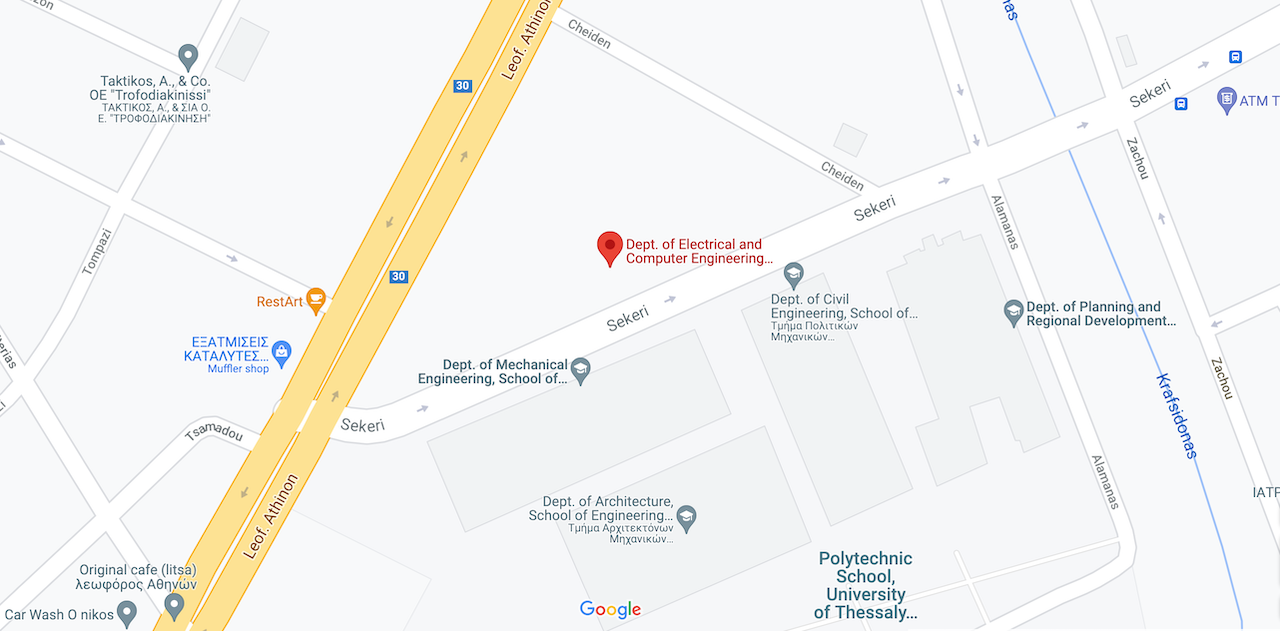| Subject Area | Computer Hardware and Architecture |
|---|---|
| Semester | Semester 8 – Spring |
| Type | Elective |
| Teaching Hours | 4 |
| ECTS | 6 |
| Course Site | https://eclass.uth.gr/courses/E-CE_U_335/ |
| Course Director |
|
The Industrial IoT (Internet of Things) and Applications course aims to familiarize students with IoT concepts, the hardware, software, telecoms, cloud interoperability required to implement practical and industrial IoT applications and review real IoT application areas. The course is laboratory based. Students will have access to a variety of IoT Field Devices, including:
- Sensors (T, humidity, pressure, motion, energy, gas, motion, image, video)
- Hardware platforms (FPGAs)
- Embedded Software platforms (Arduino or Raspberry Pi boards)
- Transmitters, Receivers, Wireless (Bluetooth, LoRa)
- Internet Gateways (Router, or simply an internet connected laptop)
- Energy Sources (Batteries or Energy Harvesting)
- Cloud Access, using ready-to-use IoT Platforms (Open-Source)
Based on the provided Lab materials, students must develop an IoT application, solving a realistic IoT problem, which must include:
- Real-time (and optionally stored) multiple sensor calibration and measurements
- Sensor data processing, either in software, or hardware
- pre- or post-processed Sensor data relaying from the IoT edge to a gateway, typically using wireless tranceivers
- gateway to Cloud interface
- simple Cloud front end for the IoT end user
Students who take the course are assumed to have fundamental background knowledge in programming, hardware, embedded software, telecoms and basic understanding of the cloud. The course brings all of these fields together, with the goal to develop realistic IoT applications. Existing Industrial IoT examples will be presented in Lectures, as well as the relevant background knowledge required.
Upon successful completion of the course, students will be accustomed with the following concepts and skill sets:
- Understanding the IoT Field, and related applications
- Understanding, and becoming familiar with software, hardware, telecoms and cloud technologies needed to setup an IoT Application
- Getting to grips with specific IoT protocols, software and industrial practices
- Gaining Experience in building, from scratch, a real industrial IoT Application, using lab components, including transceivers, sensors, telecom protocols and a front end






